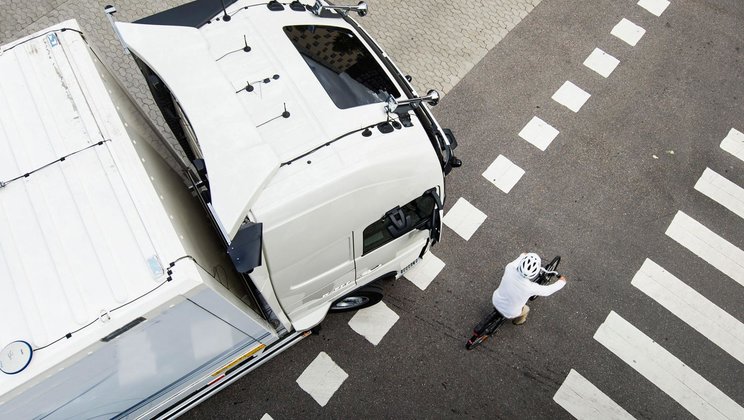The presence of several vehicles on the roads, the faster flow of traffic, and the flow of disruptive information, all together, are considerable demands on both commercial vehicle drivers and car drivers. On the other hand, there was never more opportunity for the person to drive safely than he can do now. Active safety systems installed on many cars and state-of-the-art trucks make it easier to avoid incidents and accidents.
Starting in November 2015, an applicable EU legislative requirement has been enacted that all two- and three-bladed heavy-duty trucks are equipped with the automatic emergency brake function. The goal is to reduce the number of accidents in which a truck is behind a vehicle running before it, a type of accident that is responsible for one fifth of all road traffic accidents involving trucks. At present, legislation provides for the emergency braking system to reduce the truck’s speed by 10 km / h. Next year it will reach 20 km / h.
“It is extraordinary that legislation has become stricter, but I still think that legal regulations are too lax. If you drive at 80 km / h when using the emergency braking system, you need to reduce the speed by more than 20 km / h to avoid a major collision if the vehicle is stopped, “says Carl Johan Almqvist , director of traffic and product safety at Volvo Trucks.
Volvo Trucks has developed a system that far exceeds current and future official regulations. This system was introduced in 2012 and focuses primarily on alerting the driver to the risk of collision.
“In many cases, this is enough for the driver to quickly assess the situation and thus avoid an accident,” explains Carl Johan Almqvist.
The emergency braking system is only used if this is absolutely necessary and comes into operation very quickly. Braking speed – or deceleration to use the correct technical term – is about 7 m / sec2, which is at the same level as what many cars can handle. In practice, this means that the truck’s speed can be reduced from 80 to 0 km / h for a distance of about 40 meters.
The system monitors vehicles in front using a video camera and radar technology and works regardless of whether it is sunny, cloudy, foggy or dark. If there is a risk of a collision, the driver is warned by increasing the brightness and the acoustic signals emitted. If the system does not detect a driver response, the truck automatically starts to brake gradually. If the driver still does not respond, the braking system is used until the vehicle stops. After another five seconds when the steering wheel does not move or no reaction occurs, the parking brake is automatically triggered, a safety measure designed to prevent the truck from rolling if the driver is in a state of shock or loss of consciousness.
